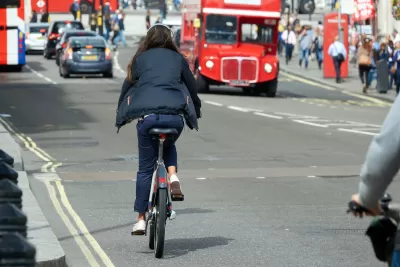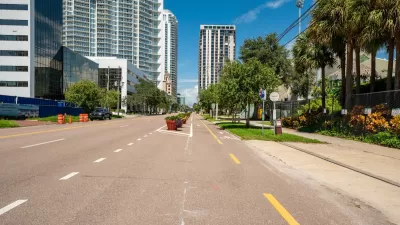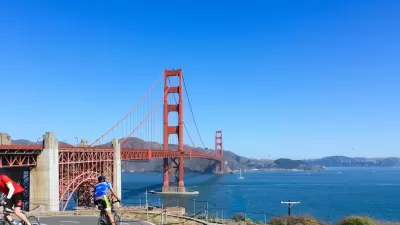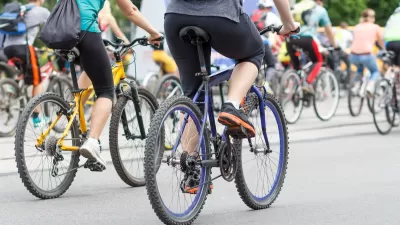Bike infrastructure isn’t just about bike lanes: safe, supportive spaces where adults can learn to ride and repair bikes are a key component.

Safe, protected bike lanes and connectivity to transit are important factors in supporting more cycling. But, Alison Griswold writes in Bloomberg CityLab, “The social infrastructure of urban cycling — programs that give people the skills, tools and confidence to get on two wheels — can be just as important as physical infrastructure, especially when it comes to bridging access gaps.”
Around the world, rates of cycling for women are significantly lower than for men, due to a host of factors from harassment to to infrastructure. “For many decades, the streets of cities around the world have largely been built around the mobility preferences of men.”
Social and educational programs that help people learn to ride and feel confident on bikes can help close the gap. “In the UK, Transport for London reported last June that uptake of adult cycle training sessions was ‘particularly strong among some traditionally under-represented cycling groups,’ with 76% female participants and more than 40% from Black, Asian, and other ethnic minority backgrounds.” Griswold provides examples of other education programs, but notes that few adult bike education programs exist in comparison with programs aimed at children. The popularity of biking helps, too: “A 2021 survey of cycling behavior in 17 countries and 35 major cities found women biked as much as men when cycling’s overall mode share exceeded 7%.” Sadly, only a few global cities meet that threshold.
FULL STORY: The Other Kind of Bike Infrastructure Cities Need

Alabama: Trump Terminates Settlements for Black Communities Harmed By Raw Sewage
Trump deemed the landmark civil rights agreement “illegal DEI and environmental justice policy.”

Planetizen Federal Action Tracker
A weekly monitor of how Trump’s orders and actions are impacting planners and planning in America.

The 120 Year Old Tiny Home Villages That Sheltered San Francisco’s Earthquake Refugees
More than a century ago, San Francisco mobilized to house thousands of residents displaced by the 1906 earthquake. Could their strategy offer a model for the present?

Ken Jennings Launches Transit Web Series
The Jeopardy champ wants you to ride public transit.

BLM To Rescind Public Lands Rule
The change will downgrade conservation, once again putting federal land at risk for mining and other extractive uses.

Indy Neighborhood Group Builds Temporary Multi-Use Path
Community members, aided in part by funding from the city, repurposed a vehicle lane to create a protected bike and pedestrian path for the summer season.
Urban Design for Planners 1: Software Tools
This six-course series explores essential urban design concepts using open source software and equips planners with the tools they need to participate fully in the urban design process.
Planning for Universal Design
Learn the tools for implementing Universal Design in planning regulations.
Clanton & Associates, Inc.
Jessamine County Fiscal Court
Institute for Housing and Urban Development Studies (IHS)
City of Grandview
Harvard GSD Executive Education
Toledo-Lucas County Plan Commissions
Salt Lake City
NYU Wagner Graduate School of Public Service





























